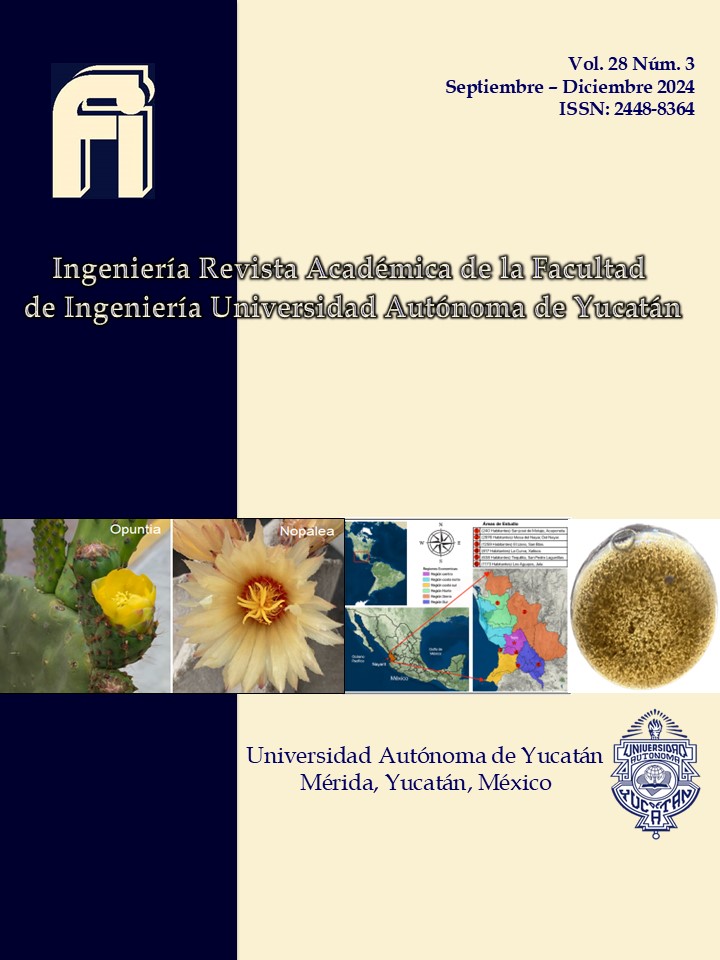Tecnologías solares para elevar el potencial agroturístico en comunidades rurales de Nayarit, México
Resumen
El sector turismo el año 2019 género el 8.5% del PIB Nacional en México, debido a la diversidad cultural y natural existente, no obstante, la planificación ha sido desequilibrada, generando desigualdad y pobreza, motivo por el cual, el presente trabajo aborda distintas comunidades rurales del estado de Nayarit, con el objetivo de identificar condiciones que permitan conocer el potencial agroturístico mediante el uso del índice de potencial agroturístico IPA. Utilizando el índice IPA y métodos de investigación cuantitativa y cualitativa, esta investigación ofrece un enfoque estructurado para seleccionar sitios adecuados para el agroturismo, contribuyendo a la diversificación económica local y a la creación de empleos. El objetivo es diseñar una ruta que impulse el desarrollo de actividades agroturísticas haciendo uso de tecnologías solares, específicamente empleando el deshidratado solar. Esto es crucial para comunidades rurales que buscan alternativas sostenibles y rentables al desarrollo agrícola tradicional que propicien el bienestar social y económico de las comunidades rurales.
Citas
Badilla Chavarría, L. (2006). Fundamentos Del Paradigma Cualitativo En La Investigación Educativa. Pensar en Movimiento: Revista de Ciencias del Ejercicio y la Salud, 4(1), 42–51. https://doi.org/10.15517/pensarmov.v4i1.411
Bassi, J. (2015). Formulación de proyectos de tesis en ciencias sociales (Número November).
Burja, C., & Burja, V. (2014). Sustainable development of rural areas: A challenge for Romania. Environmental Engineering and Management Journal, 13, 1861–1871. https://doi.org/10.30638/eemj.2014.205
Domi, S., & Belletti, G. (2022). The role of origin products and networking on agritourism performance: The case of Tuscany. Journal of Rural Studies, 90, 113–123. https://doi.org/10.1016/J.JRURSTUD.2022.01.013
Galluzzo, N. (2016). ROLE OF FINANCIAL SUBSIDIES ALLOCATED BY THE COMMON AGRICULTURAL POLICY IN REDUCING OUT EMIGRATION IN ITALIAN COUNTRYSIDE. Romanian Journal of Regional Science, 10(2), 50–63. https://econpapers.repec.org/RePEc:rrs:journl:v:10:y:2016:i:2:p:50-63
INEGI. (2020). Censo de población y vivienda. https://www.inegi.org.mx/app/areasgeograficas/?ag=21
INEGI. (2021). México en cifras. https://www.inegi.org.mx/app/areasgeograficas/default.aspx#collapse-Resumen
Lupi, C., Giaccio, V., Mastronardi, L., Giannelli, A., & Scardera, A. (2017). Exploring the features of agritourism and its contribution to rural development in Italy. Land Use Policy, 64, 383–390. https://doi.org/10.1016/J.LANDUSEPOL.2017.03.002
Matei Titilina, F. D. (2015). Cultural Tourism Potential, as Part of Rural Tourism Development in the North-East of Romania. Procedia Economics and Finance, 23, 453–460. https://doi.org/10.1016/S2212-5671(15)00584-5
Reyez, O., & Sánchez, C. (2005). Metodología para determinar el potencial de los recursos turísticos naturales en el Estado de Oaxaca, México. Cuadernos De Turismo, 1(16), 153–173.
Secretaría de Turismo. (2020). PROGRAMA SECTORIAL DE TURISMO 2020-2024.
SERNATUR. (2016). MANUAL DE DESTINOS: Elementos para la gestión de Destinos Turísticos. ladupla.cl.
Sgroi, F., Donia, E., & Mineo, A. M. (2018). Agritourism and local development: A methodology for assessing the role of public contributions in the creation of competitive advantage. Land Use Policy, 77, 676–682. https://doi.org/10.1016/J.LANDUSEPOL.2018.06.021
Siew, T. F., Aenis, T., Spangenberg, J. H., Nauditt, A., Döll, P., Frank, S. K., Ribbe, L., Rodriguez-Labajos, B., Rumbaur, C., Settele, J., & Wang, J. (2016). Transdisciplinary research in support of land and water management in China and Southeast Asia: evaluation of four research projects. Sustainability Science, 11(5), 813–829. https://doi.org/10.1007/s11625-016-0378-0

Esta obra está bajo licencia internacional Creative Commons Reconocimiento-NoComercial 4.0.
Avisos de derechos de autor propuestos por Creative Commons
1. Política propuesta para revistas que ofrecen acceso abierto
Aquellos autores/as que tengan publicaciones con esta revista, aceptan los términos siguientes:
- Los autores/as conservarán sus derechos de autor y garantizarán a la revista el derecho de primera publicación de su obra, el cuál estará simultáneamente sujeto a la Licencia de reconocimiento de Creative Commons que permite a terceros compartir la obra siempre que se indique su autor y su primera publicación esta revista.
- Los autores/as podrán adoptar otros acuerdos de licencia no exclusiva de distribución de la versión de la obra publicada (p. ej.: depositarla en un archivo telemático institucional o publicarla en un volumen monográfico) siempre que se indique la publicación inicial en esta revista.
- Se permite y recomienda a los autores/as difundir su obra a través de Internet (p. ej.: en archivos telemáticos institucionales o en su página web) antes y durante el proceso de envío, lo cual puede producir intercambios interesantes y aumentar las citas de la obra publicada. (Véase El efecto del acceso abierto).

